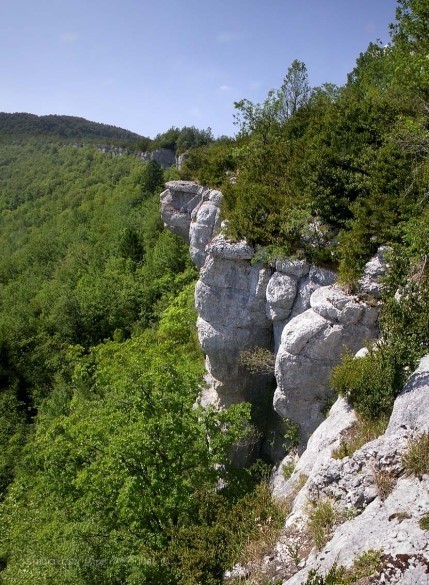
The Lezan Rock
The appeal of this hikes lies in its proximity to the Rock and in the Mediterranean atmosphere of the dry grasslands. In the early hours of the morning, or after storms, wisps of fog loosely surround the boxwood and birches and transport you to the middle of the savannah.
6 points of interest
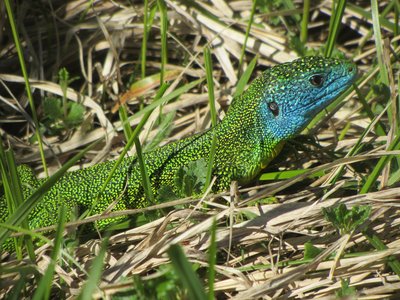
Lézard vert - PNRHJ / Julien Barlet FaunaThe green lizard
Reptiles are best observed during a hot spring or summer’s day, preferably under cover of clouds. Among such reptiles is the green lizard, an original creature in the High-Jura. A southern species, it is mainly present in the south and the west of France and the High-Jura is one of the most northern limits of its natural range. Perched on a low branch, a dry-stone wall or on the edge of a path, the green lizard has atypical measurements and colours: measuring up to 40 cm in length, tail included, and with a turquoise blue throat for the male and a bright green body with black spots, the green lizard shouldn’t go unnoticed during its time in the sun, and yet it is often the sound of it scurrying away that alerts passers-by to its presence.
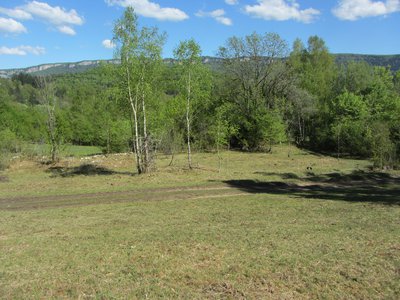
Pelouses sèches - PNRHJ / Julien Barlet Natural environmentsDry grasslands
Thin and nutrient-poor soil, sun exposure, low water-retention capacities: these are the main characteristics of dry grasslands, open environments that are also called “orchid lawns”. Mountain germander, Breckland thyme and laserwort are just some of the flower species that live alongside the early-purple orchid and the pyramidal orchid in this environment that attracts many butterflies. They are of unique ecological interest as over a quarter of protected species in France live in dry grasslands.
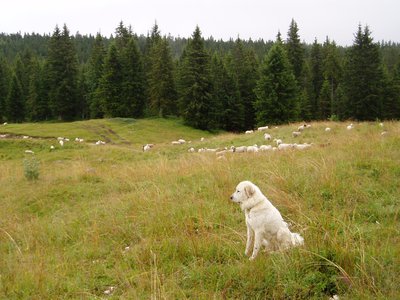
Patou et son troupeau de moutons - PNRHJ / Julien Barlet Pastoralism and agricultureWhen protection calls for sheep
Despite their major significance in terms of ecology and landscape, dry grasslands are currently disappearing across a large part of Europe. Threatened by the pressures of urban life and agricultural production (fertilisation, overgrazing, etc.), they are often abandoned. As a result, they close up, naturally returning to bush stages (junipers, boxwood) and later to forest stages. Along this trail, you will notice flocks of sheep grazing, under the protection of dogs. Their purpose is to maintain these open environments, prevent them from becoming overgrown and thus to preserve their remarkable biodiversity.
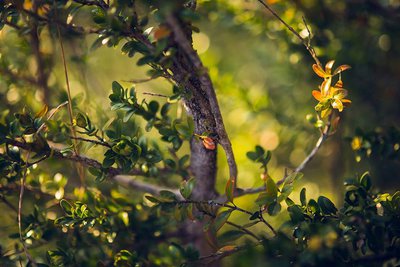
Buis - PNRHJ / Léo Poudré FloraThe boxwood forest
The slow growth, long lifespan (up to 600 years) and the evergreen leaves of boxwood made it the symbol of immortality during ancient times. This very hard, yellow and small-grained wood is particularly sought after to manufacture musical instruments, for engravings and for wood turning!
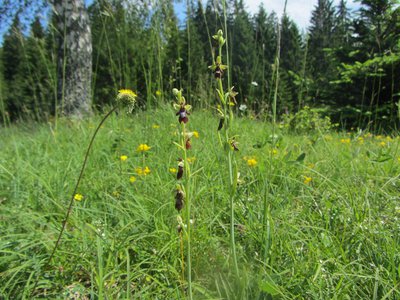
Ophrys mouche - PNRHJ / Julien Barlet FloraThe fly orchid and the art of imitation
As they don’t produce any nectar, orchids such as the fly orchid have developed new ways of attracting pollinating insects. They have become masters in the art of imitation: the flowers of this fly orchid resemble the insect of the same name. When they bloom, male flies are already out and are actively looking to mate. They don’t find any females as these only come out a little later and are therefore easily lured by this flower “in disguise” and attempt to mate with it. As they move, they agitate the stamens and become sprinkled with pollen. They then move from flower to flower with their load of pollen, and become unsuspecting participants in the pollination of fly orchids.
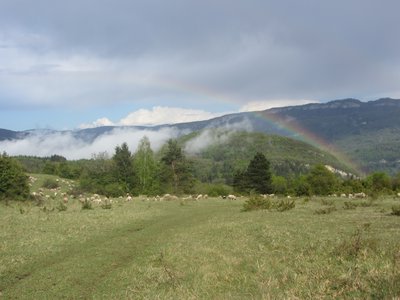
Point de vue - PNRHJ / Julien Barlet ViewpointViewpoint over the Bienne wind gap
The eye is drawn to the valley of Bienne and the village of Molinges far below, and to the cliffs of the Surmontant ridge opposite. At the foot of the hill, on the ground to the left, you will notice three marks in the rock: the “pas de l’Âne” (donkey’s footstep), an ancestral name and the source of many legends. These marks remind hikers of the steepness of the trail that dives down towards Molinges, into the dip in the Bienne valley.
Description
Starting at the Health Course, the trail (yellow waymarking) follows the stone path to the right (sporty course) and then enters the forest before reaching la Varesse.
Turn left to follow the road suitable for vehicles. Further on, it heads along a few pastures. The main path branches off to the left and then enters the forest. Ascend to the Lezan Rock.
The trail enters a pasture to the left (bicycle path) and then heads right before curving to the left. It heads down for some time along the edge of the Lezan Rock before reaching THE DONKEY’S STEP.
Without crossing the second bicycle path, head straight ahead along the trail and exit onto an open combe, with a power line running through it. Head up the combe’s east side to reach a good trail ascending southwards. At the top (electrical tower), turn left and reach a small pass (viewpoint over the la Prat barn, down to your right).
The well-cleared trail through boxwood ascends to the left along the ridge line, before gradually descending into a coniferous forest. The path widens (stone fountain trough under a tufa waterfall, a limestone concretion deposited onto foam). Continue along the path, head past Tré la Croix and return to the starting point.
- Departure : Lavans-les-Saint-Claude
- Arrival : Lavans-les-Saint-Claude
- Towns crossed : Lavans-Les-Saint-Claude
Forecast
Recommandations
Be careful, there are many ascents and descents.
This trail passes through pastures in which sheep regularly graze, guarded against dogs and other predators by “Patou” dogs. To respect the owners and farmers granting you passage, and for the security of livestock, we ask that you use the adapted passageways to get across fencing and be sure to close gateways behind you.
Avoid bringing your dog if you have one.
When there is a herd of sheep on the trail, go around them. If Patou approach, remain calm and unthreatening. Do not run, this tends to excite the dogs. When cycling, descend from your bike.
Wild flowers are beautiful, they may be rare and protected and often wilt quickly. Do not pick them! They will delight the next hikers.
In case of forest works (felling, skidding, etc.), for your safety, know when to stop and turn around.
Information desks
Tourist information centre - Haut-Jura Saint-Claude
3 place de l'Abbaye, 39200 Saint-Claude
Transport
To visit and get about in the High-Jura, visit www.reshaut-jura.fr, the eco-mobility portal listing all means of transport within the Park.
Access and parking
10 km west of Saint-Claude, via the D 436 and the D 470 to reach the village of Lavans-les-Saint-Claude. Head 250 m past the church and turn right in the hairpin bend to reach the parking lot at the start of the health course through the “rue du crêt du Bief”.
Parking :
Report a problem or an error
If you have found an error on this page or if you have noticed any problems during your hike, please report them to us here:
